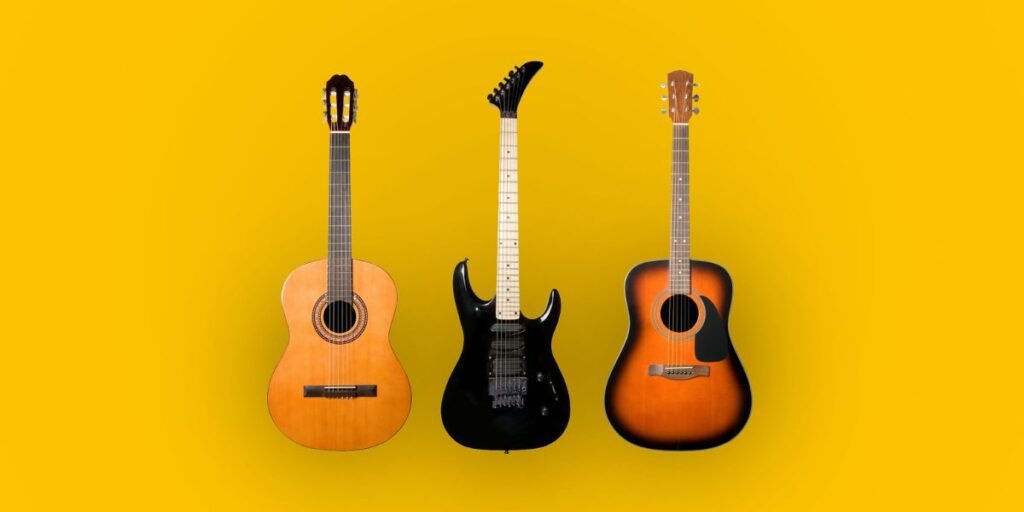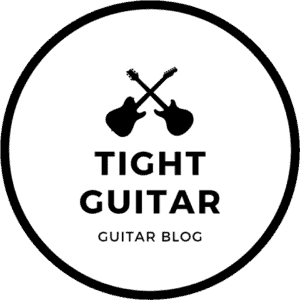
If you’ve been playing the acoustic guitar for a while, you may have considered switching to an electric guitar. While it can be an intimidating transition, it’s worth exploring for the added versatility and creative opportunities it can bring to your music.
As a general rule, it’s recommended to transition from an acoustic to an electric guitar after mastering basic skills such as chords, scales, and repertoire-building. Once you feel comfortable with these, an electric guitar can offer new possibilities in sound and playing style.
In this article, we’ll take a closer look at the factors to consider before making the switch, practical tips and advice for getting started, common challenges and how to overcome them, and the benefits of switching from acoustic to electric guitar.
Factors to Consider Before Making the Switch

- To make a successful transition from an acoustic guitar to an electric one, having a solid foundation of guitar knowledge is crucial. This includes mastering basic chords, barre chords, and primary scales control, as well as having a repertoire of 5-10 songs and song segments. By having this foundation, you’ll be able to fully explore the new sounds and possibilities offered by an electric guitar.
- As a general rule, the transition to an electric guitar should be seen as a reward for all the hard work you’ve put in. It’s a chance to challenge yourself and expand your playing style, which can be a great source of motivation. With an electric guitar, you’ll be able to experiment with different genres, effects, and playing techniques, which can take your playing to the next level.
- It’s important to consider your budget when making the transition to an electric guitar. In addition to the cost of the guitar itself, accessories like cables and amps can add to the overall cost. It’s worth investing in quality equipment that will last, but it’s also possible to find affordable options that still provide a great sound. By doing your research and finding the right balance between cost and quality, you can make the transition to an electric guitar without breaking the bank.
How to Make the Switch: Practical Tips and Advice
Once you’ve decided to switch to an electric guitar, there are several things to keep in mind as you make the transition. First, get familiar with your new electric guitar and the sound it produces. Adjusting to the new playability may take some time, so be patient with yourself. Learning new techniques and skills like sliding and bending will expand your playing abilities and help you develop a new style. Building a new repertoire with more solo options is another benefit of electric guitar playing. Finally, choosing the right equipment, like a suitable amp and guitar pedals, can help you achieve your desired sound.
Common Challenges and How to Overcome Them

It’s normal to experience challenges as you make the switch from acoustic to electric guitar. Some common difficulties include adapting to different playing styles and lead roles, noise or sound problems, and physical discomfort or pain. To overcome these challenges, it’s important to practice regularly, experiment with different playing styles, and troubleshoot issues as they arise. Additionally, taking breaks and stretching can help alleviate physical discomfort.
Benefits of Switching from Acoustic to Electric Guitar
Switching to an electric guitar can open up new opportunities for your music. The enhanced sound and versatility allow you to explore a wider range of musical styles and genres. You can take advantage of new techniques and skills, experiment with different effects, and develop a unique playing style. Increased opportunities for live performances and recordings are also benefits of playing electric guitar.
The Roles of Electric and Acoustic Guitars: Lead vs. Rhythm
Typically, the acoustic guitar’s main role is to provide harmonic support for the melody. Therefore, acoustic guitar players will primarily focus on chords, finger-picking styles, and song structure.
On the other hand, the electric guitar offers a much wider soundscape, especially when you incorporate various pedals and play with different pickup modes. The versatility of the electric guitar allows you to explore many different musical roles. With an electric guitar, you can rock out and solo with distortion, emulate various synthesizer sounds, and take on rhythmic parts. It opens up a whole new dimension for guitar players, with endless possibilities for musical expression. Understanding the distinctive roles of each guitar can help you better utilize their unique characteristics in your playing.
How Acoustic Guitar Skills Translate to Electric

Learning the guitar can be tough, but whether you’re jamming on an acoustic or shredding on an electric, the journey begins the same way. You’ve got to learn those chords, scales, and picking techniques, along with a healthy dose of beginner tunes. But once you’ve mastered those fundamentals, the differences between the two types of guitar really start to shine.
The acoustic is all about rhythm and strumming, while the electric is all about leads and solos. It’s like the difference between a quiet night in and a raging party.
The Challenges of Switching from Acoustic to Electric Guitar

- Size – The sleeker body of an electric guitar might feel unfamiliar compared to the bulkier acoustic one, making it a little challenging to maintain a stable grip. But fret not; as you get more accustomed to the new instrument, you’ll notice that your hands have more space to move around, giving you greater flexibility and control over your playing.
- Thinner Strings – Typically, electric guitar strings are thinner than those on an acoustic guitar, which can be a challenge for beginners as it can cause discomfort and pain in the fingertips. However, with persistence and practice, you’ll develop calluses on your fingertips, which will help reduce the discomfort. As your fingertips toughen up, you’ll begin to experience the benefits of the thinner strings, such as being able to bend and vibrate them more easily, allowing you to achieve a wider range of sounds and effects.
- The Knobs on Electric Guitars – Electric guitars come equipped with various knobs, including volume and tone controls, as well as switches for selecting different pickup modes. At first, it may be a little overwhelming, and they might get in the way, but with practice, you’ll get the hang of it and soon be able to make adjustments smoothly.
Does Everyone Transition From Acoustic Guitar to Electric?
While it’s true that you don’t have to switch from an acoustic to an electric guitar if you don’t want to, many guitar players, such as Tommy Emmanuel, have built successful careers playing only acoustic guitar. However, if you’re looking to expand your musical horizons and try new things, transitioning to an electric guitar can be a great opportunity.
The Differences Between Classical, Acoustic, and Electric Guitars:

| Classical | Acoustic | Electric | |
|---|---|---|---|
| Genre / musical role | Usually used for more oriental music and associated with Spanish music | Usually takes the rhythmic musical role but can also be used as a leading instrument | Usually takes the leading musical role but can be used as a rhythmic instrument as well |
| Picking technique | Traditionally played with fingerpicking technique | Usually played with both fingerpicking or a pick | Mostly played with a pick but sometimes fingerpicking as well |
| Action | Highest out of the three, but like every guitar, it is adjustable | Similar to electric | Similar to acoustic |
| String | Nylon strings (wrapped in wire) | Usually, Brass strings (steel) | Usually, Nickel strings (steel) |
| Bending | Not common | Possible but harder than electric | Rock on! |
| Vibrato | ✅ | ✅ | ✅ |
| Whammy bar | ❌ | ❌ | ✅ |
| Extra Knobs | ❌ | Only if it has a pickup, and they are usually conveniently placed | Many knobs, compared to acoustic guitars and can interrupt playing |
| Extra equipment | ❌ | Optional but not obligatory | Must be connected to an amp using a cable (besides hollow-body guitars) |
| Tapping and sweep picking | ❌ | Not ideal, but it can be done | Rock on! |
Conclusion:
In conclusion, making the switch from acoustic to electric guitar comes with many benefits but requires careful consideration and preparation. It is important to have a solid foundation of guitar knowledge, an understanding of the transition process, and an appropriate budget for the right equipment.
Although the transition may present some challenges, the opportunities for growth and musical exploration are significant. With the right mindset, regular practice, and a little troubleshooting, these challenges can be overcome. Ultimately, understanding the distinctive roles of each guitar and the transferable skills from acoustic to electric playing will help guitarists develop their unique sound and style and unlock their full potential as musicians.

